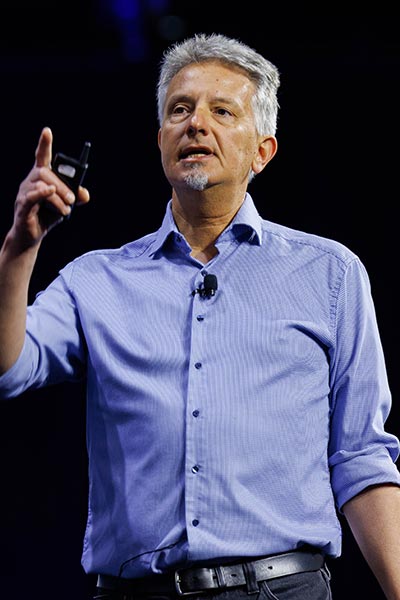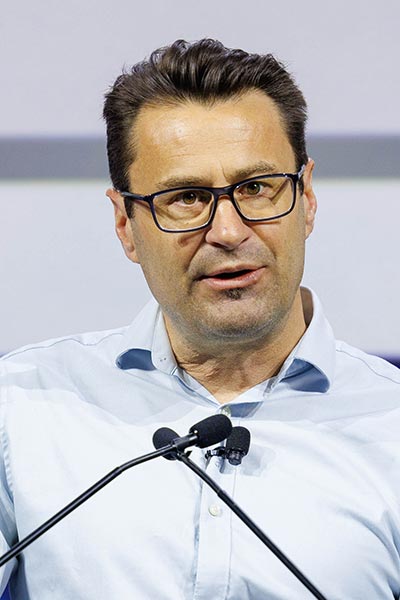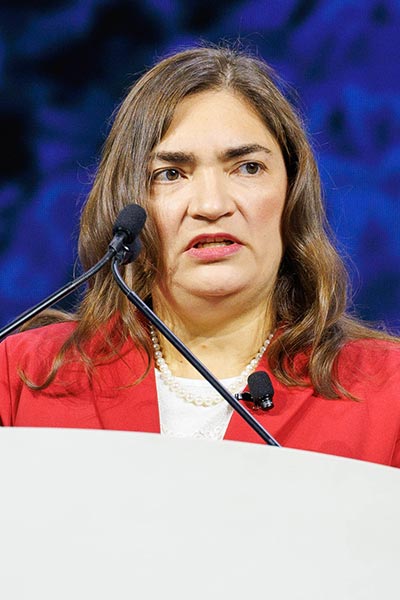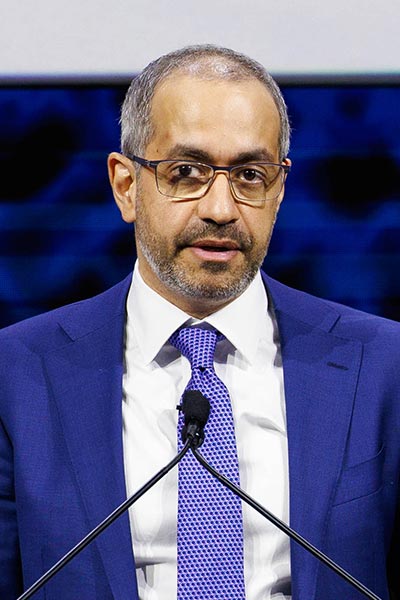Third Plenary Session showcases exciting technologies driving innovation

Monday’s programming at the AACR Annual Meeting 2025 opened with the third of six thought-provoking Plenary Sessions. To set the stage for the topic of “Innovative Technologies Driving Advances in Cancer Research,” session chair Alberto Bardelli, PhD, from Istituto Fondazione di Oncologia Molecolare (IFOM) in Italy, began the session with a thought experiment.
“Can you imagine what would happen if you had to enter your lab once you come back from this great meeting and see that you cannot do a PCR reaction because PCR … had not been invented yet?” he asked.
The question emphasized the importance of technological advancements in reshaping the way researchers approach their work. What revolutionary ideas of today could become integral experimental or clinical procedures tomorrow?
Four speakers took the stage to showcase their examples of continued innovation in tools, analysis frameworks, and experimental designs that can improve the field of cancer research.
‘Minicolons’ provide more accurate model of tissue architecture

Organoids may be thought of as featureless spheres of cells, but Matthias P. Lütolf, PhD, from the Roche Institute of Human Biology, is challenging that notion with an inventive “minicolon” model. On the surface, the idea is quite simple—by modulating the shape of organoids to structurally mimic intestinal crypts, he and his colleagues made the organoids functionally mimic intestines as well.
The researchers used optogenetics to conditionally induce cancer-causing mutations in the minicolons and thereby monitor the development of microscopic tumors, both genetically and physiologically, in real time. They have successfully made cell- and patient-derived minicolon models and demonstrated the ability to use them for drug screens.
But Lütolf has no plans to stop with minicolons. He and his colleagues have also assembled a mini-lymph node system with several different compartments for different types of immune cells. When the mini-lymph node model was cultured alongside the minicolon model, researchers saw signs of the immune cells extravasating toward the tumor and the tumor cells metastasizing toward the lymph node model.
“We think that such models will finally start to allow us to capture some of the complexity of processes that can only be modeled in an animal,” Lütolf said. “I think this is … a game-changing opportunity that we have available with these engineered organoids.”
Designing more robust CAR T cells

Marcela V. Maus, MD, PhD, from Mass General Hospital, brought the spirit of innovation to the clinic by showing how she and her colleagues are editing chimeric antigen receptor (CAR) T cells to enhance their therapeutic potential.
She began by discussing her team’s work with modulating interferon gamma (IFNγ) signaling in CAR T cells. Because IFNγ signaling can promote inflammation (which can cause side effects) and upregulate immune checkpoints (which can dampen the antitumor immune response), Maus and colleagues knocked out the IFNγ receptor in CAR T cells. The modification improved the cells’ antitumor activity and extended overall survival in mice.
Maus promoted the use of CRISPR knockout screening to identify new modifications that can further optimize CAR T cells, but she cautioned that moving every potential CAR T-cell variation into clinical trials is inefficient, and researchers should think critically about which to prioritize.
“The power behind cellular therapeutics is really the potential for innovation,” she said. “This is a challenge because the sheer number of potential innovations also makes it difficult to choose.”
The expansive potential of liquid biopsy

A notable example of technological innovation for cancer detection and monitoring is liquid biopsy, with a relative explosion of available applications over the course of the last decade. Trevor Pugh, PhD, from the Ontario Institute for Cancer Research, broke down some of the inventive ways these applications might someday be used in the clinic.
Many researchers are exploring the potential of liquid biopsy for cancer early detection. Pugh discussed how emerging technologies such as fragmentomics are enhancing detection accuracy and pointed to an example of a prospective clinical trial testing the usefulness of liquid biopsy to monitor for cancer in patients with cancer predisposition syndromes.
Pugh also explained how liquid biopsy may facilitate disease monitoring in patients with multiple myeloma, who often must undergo frequent bone marrow biopsies to test for a recurrence. He shared how liquid biopsy is also being used to reconstruct the genomes of primary tumors that have been significantly damaged by therapy.
“The ultimate goal here is not only to reduce the burden of cancer but also move cancer detection early,” Pugh said. “We want to see this stage shift to try and find these cancers … when they’re the most treatable, both at first presentation but also at relapse, should that occur.”
Innovative clinical trial design

To close out the session, Muhammad Shaalan Beg, MD, MBA, from the National Cancer Institute (NCI), encouraged attendees to allow clinical trial design to evolve with technological advancements. He explained how clinical investigators can use new technologies to decentralize clinical trials, conducting portions of the trial at sites distanced from the principal investigator.
Beg advocated for the use of adaptations such as telehealth, remote monitoring, and mobile nursing to allow more patients to participate in clinical trials without geographical constraints. The NCI and U.S. Food and Drug Administration (FDA) have compiled a wealth of resources and guidelines to support investigators looking to conduct decentralized trials, including the NCI’s Telehealth Research Centers of Excellence and Virtual Clinical Trials Office, and an FDA guidance on Conducting Clinical Trials With Decentralized Elements.
“We need to urgently deploy these methods, redefine what’s feasible, redefine … who our customers for clinical trials are, and how we can innovate on these in a way that improves clinical trial access and helps us speed up the development of cancer treatments,” Beg concluded.
The recording of the full session is available for registered Annual Meeting attendees through October 2025 on the virtual meeting platform.
More from the AACR Annual Meeting 2025
View a photo gallery of scenes from Chicago, continue the conversation on social media using the hashtag #AACR25, and read more coverage in AACR Annual Meeting News.

